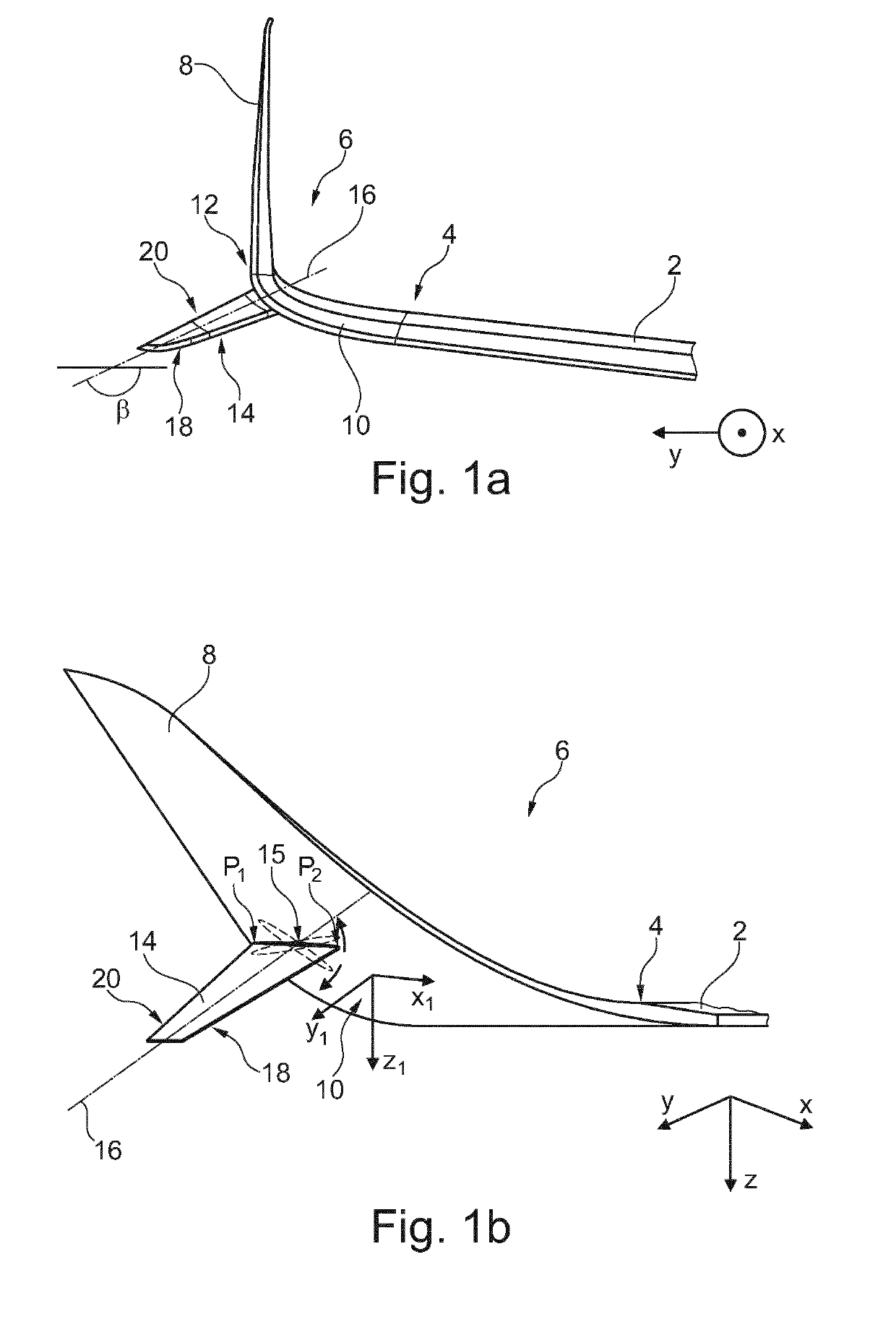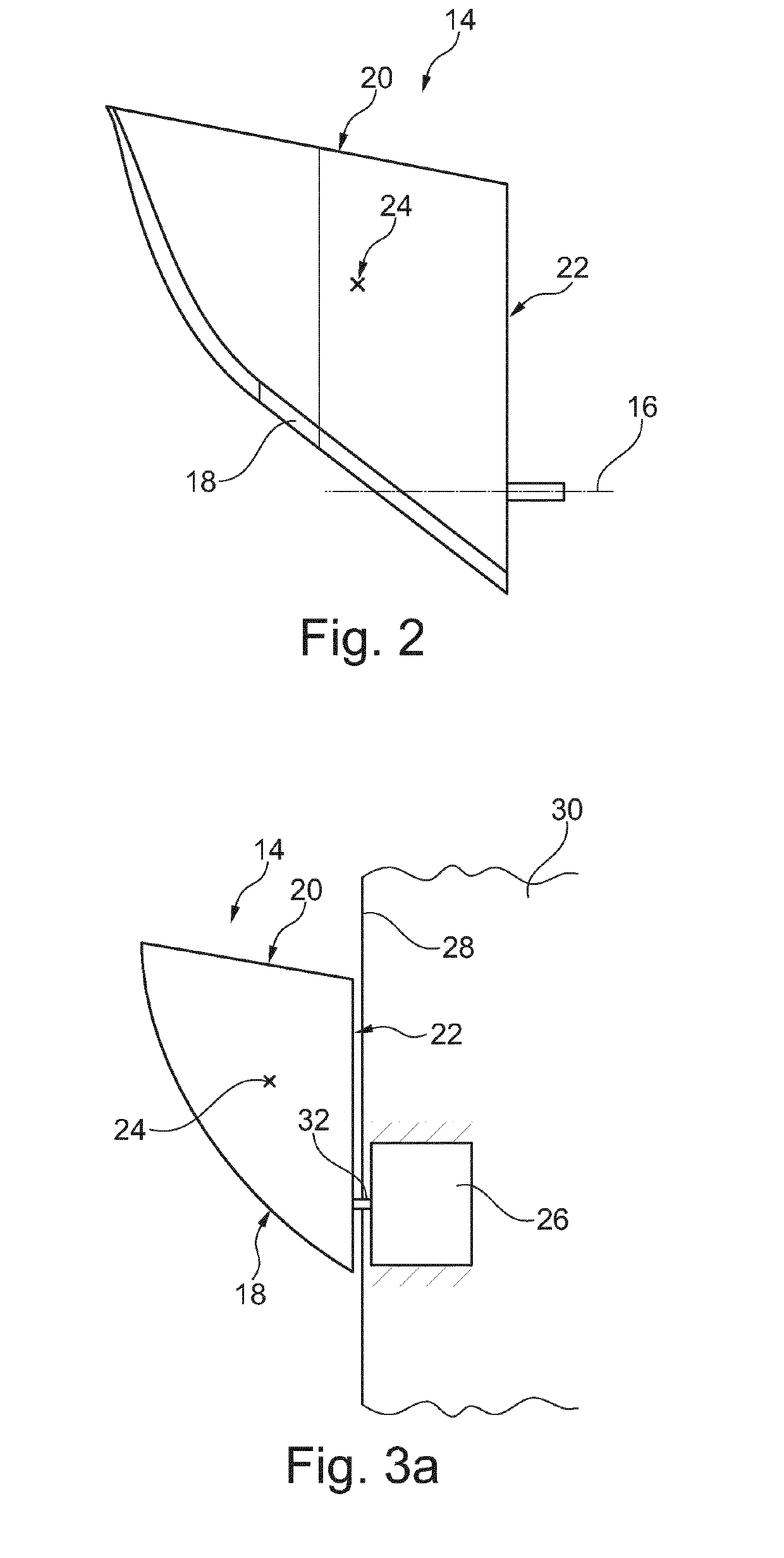Aircraft With Load Reducing Wing Like Element
a technology of reducing wing and wing root, applied in the field of aircraft, can solve the problems of reducing the effective lever arm relative to the wing root, adding bending moments in the wing region, etc., and achieve the effect of reducing the load acting on the aircraft structur
- Summary
- Abstract
- Description
- Claims
- Application Information
AI Technical Summary
Benefits of technology
Problems solved by technology
Method used
Image
Examples
Embodiment Construction
[0045]FIG. 1a shows a wing 2 attached to a fuselage (not shown) of an aircraft, the wing 2 having a wing end 4, to which a wing tip device 6 is mounted. Exemplarily, the wing tip device 6 comprises a planar winglet 8 as well as a curved transition region 10 extending between a connection region 12 of the planar winglet 8 and the wing end 4 of the wing 2. The planar winglet 8 extends at an almost upright angle to an x-y-plane of the aircraft. The wing tip device 6 produces an additional structural load on the aircraft structure due to aerodynamic and mass forces, depending on the actual flight state. Exemplarily, the wing tip device 6 is shown in a flight state.
[0046]Exemplarily, a wing-like element 14 is placed on a lower side of the transition region and extends in a span-wise direction, thereby leading to an increase in wing span. As indicated by a dash-dotted line, the wing-like device 14 is rotatable about a rotational axis 16, which is explained in further detail below. The win...
PUM
 Login to View More
Login to View More Abstract
Description
Claims
Application Information
 Login to View More
Login to View More - R&D
- Intellectual Property
- Life Sciences
- Materials
- Tech Scout
- Unparalleled Data Quality
- Higher Quality Content
- 60% Fewer Hallucinations
Browse by: Latest US Patents, China's latest patents, Technical Efficacy Thesaurus, Application Domain, Technology Topic, Popular Technical Reports.
© 2025 PatSnap. All rights reserved.Legal|Privacy policy|Modern Slavery Act Transparency Statement|Sitemap|About US| Contact US: help@patsnap.com



